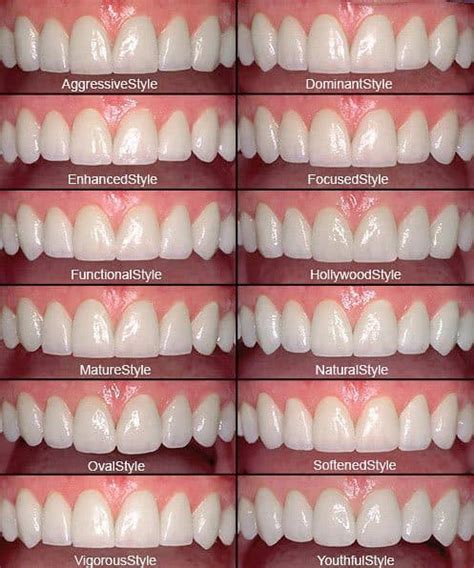In the world of dentistry, there are numerous cosmetic and restorative treatments available to improve the appearance and health of teeth. One such treatment that has gained significant attention in recent years is veneer technology. But what exactly is veneer tech, and how does it work? In this comprehensive guide, we will delve into the world of veneer technology, exploring its benefits, types, and everything else you need to know.
What are Veneers?
A veneer is a thin layer of material, typically made of porcelain or composite resin, that is bonded to the front of a tooth to improve its appearance. Veneers are designed to mask imperfections, such as discoloration, chips, or gaps, and can completely transform the look of a smile.
How Do Veneers Work?
The veneer process typically involves several steps:
- Consultation: The first step is to schedule a consultation with a dentist to discuss the desired outcome and determine if veneers are the right solution.
- Preparation: The dentist will prepare the tooth by removing a small amount of enamel to make room for the veneer.
- Impressions: Impressions of the tooth are taken to create a model of the veneer.
- Fabrication: The veneer is fabricated in a dental laboratory using the impressions.
- Bonding: The veneer is bonded to the tooth using a special adhesive.
Types of Veneers
There are several types of veneers available, each with its own unique characteristics:
- Porcelain Veneers: These are the most common type of veneer and are made from ceramic materials. They are highly durable and resistant to stains.
- Composite Veneers: These are made from a combination of plastic and glass particles. They are less expensive than porcelain veneers but may not be as durable.
- Lumineers: These are a type of porcelain veneer that is designed to be ultra-thin and translucent. They are ideal for patients who want a more natural look.
- Clip-on Veneers: These are removable veneers that can be clipped on and off as needed. They are ideal for patients who want a temporary solution.
Benefits of Veneers
Veneers offer a range of benefits, including:
- Improved Appearance: Veneers can completely transform the look of a smile, making it more attractive and confident.
- Durable: Veneers are highly durable and can last for many years with proper care.
- Stain-Resistant: Veneers are resistant to stains, making them ideal for patients who want a long-lasting solution.
- Minimally Invasive: The veneer process is relatively painless and minimally invasive.
The Science Behind Veneer Technology
Veneer technology has advanced significantly in recent years, thanks to advances in materials science and dental engineering. The development of new materials, such as nanoceramics and glass-ceramics, has enabled the creation of more durable and natural-looking veneers.
How Much Do Veneers Cost?
The cost of veneers can vary depending on several factors, including the type of veneer, the location, and the dentist's fees. On average, porcelain veneers can cost anywhere from $500 to $2,000 per tooth, while composite veneers can cost anywhere from $300 to $1,500 per tooth.
Who is a Good Candidate for Veneers?
Veneers are ideal for patients who want to improve the appearance of their teeth. Good candidates for veneers include:
- Patients with Discolored Teeth: Veneers can mask discoloration and stains, making them ideal for patients who want a brighter smile.
- Patients with Chipped or Cracked Teeth: Veneers can repair chips and cracks, making them ideal for patients who want to restore the appearance of their teeth.
- Patients with Gaps: Veneers can close gaps between teeth, making them ideal for patients who want a more uniform smile.
Common Misconceptions About Veneers
There are several common misconceptions about veneers that need to be debunked:
- Veneers are Painful: The veneer process is relatively painless and minimally invasive.
- Veneers are Expensive: While veneers can be expensive, they are a worthwhile investment for patients who want a long-lasting solution.
- Veneers are Only for Cosmetic Purposes: Veneers can also be used to repair damaged teeth and improve oral health.

The Future of Veneer Technology
The future of veneer technology is exciting, with advances in materials science and dental engineering enabling the creation of more durable and natural-looking veneers. Some of the trends that are expected to shape the future of veneer technology include:
- Digital Dentistry: The use of digital technology, such as 3D printing and CAD/CAM software, is expected to revolutionize the veneer process, making it more efficient and accurate.
- Nanoceramics: The development of nanoceramics is expected to enable the creation of more durable and natural-looking veneers.
- Glass-Ceramics: The development of glass-ceramics is expected to enable the creation of more translucent and natural-looking veneers.
Gallery of Veneer Technology






Frequently Asked Questions
What are veneers?
+Veneers are thin layers of material that are bonded to the front of a tooth to improve its appearance.
How much do veneers cost?
+The cost of veneers can vary depending on several factors, including the type of veneer, the location, and the dentist's fees.
What are the benefits of veneers?
+Veneers offer several benefits, including improved appearance, durability, stain-resistance, and minimally invasive procedure.
In conclusion, veneer technology is a revolutionary dental treatment that can completely transform the look of a smile. With its numerous benefits, including improved appearance, durability, and stain-resistance, veneers are an ideal solution for patients who want a long-lasting and confident smile. Whether you're looking to repair damaged teeth or simply want to improve the appearance of your smile, veneer technology is definitely worth considering.
